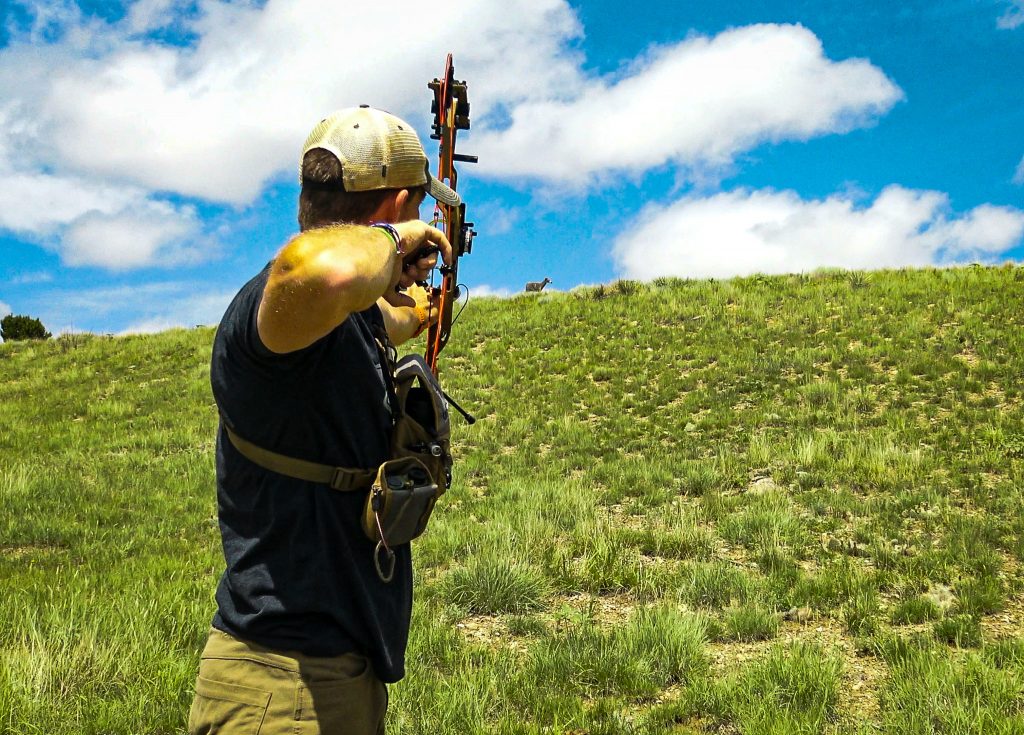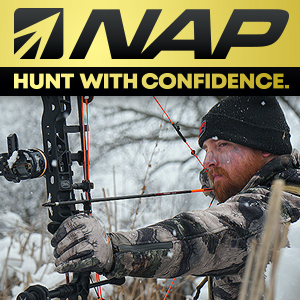Shooting a compound bow is a great discipline, and those that continue to break down barriers and step outside established norms are the ones that will fill the freezer and the wall this fall.
I’ve been shooting and hunting with a compound bow for 25 years. During that tenure, I’ve learned a lot. Nothing trumps the feeling of sending carbon downrange at foam targets and living, breathing creatures. It’s a great discipline, and bowhunting will take you to the highest of highs and lowest of lows.
The goal is to be perfect. To put every arrow in the X — hit 12-rings on every 3D target — make every shaft fired at an animal lethal. However, as Kevin Costner eloquently put it in the Blockbuster hit Tin Cup, “Perfection is unattainable.”
That doesn’t mean we shouldn’t keep trying, pushing, and striving for perfection. If you want to have more highs than lows and go into fall full of confidence, give the to-com shooting games a try. While nothing is wrong with pounding dots in the backyard at 20 yards, the task gets old. It makes us complacent, and doesn’t help us move the needle.
Game #1 – 7-Spot Round
This game is one of my favorites. Years ago, I shot in an indoor archery league. On Wednesday night, we shot a 5 Spot 300 round. The goal was to hit five Xs with five arrows at five different circular targets on a 17×17 paper sheet. We shot 12 rounds.
The inner scoring ring is labeled with an X, and if any arrow shaft even cuts that line, the shot gets a score of 5X. If the shot hits the next white outer circle, the shot is scored a 5. The rest of the circle is made of two blue scoring rings. An arrow placed in these rings is worth a score of 4.
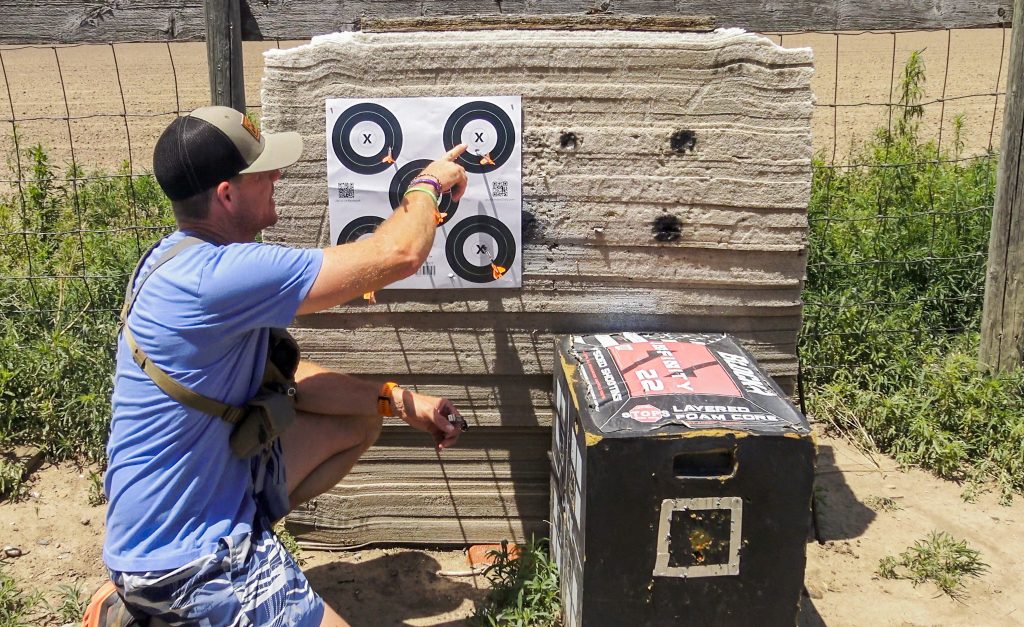
I found the practice fun and challenging, so I decided to take things to the next level. I bought a package of 5-Spot Indoor Targets — you can get a 100 pack for under $50 — and created a new game.
First, the archer stands at 30 yards — not 20 — and fires five arrows at the five circular target faces. Next, the archer moves from 30 to 60 yards and shoots a single aired-up balloon. Lastly, the archer moves up to 20 yards and takes a shot at a golf tee.
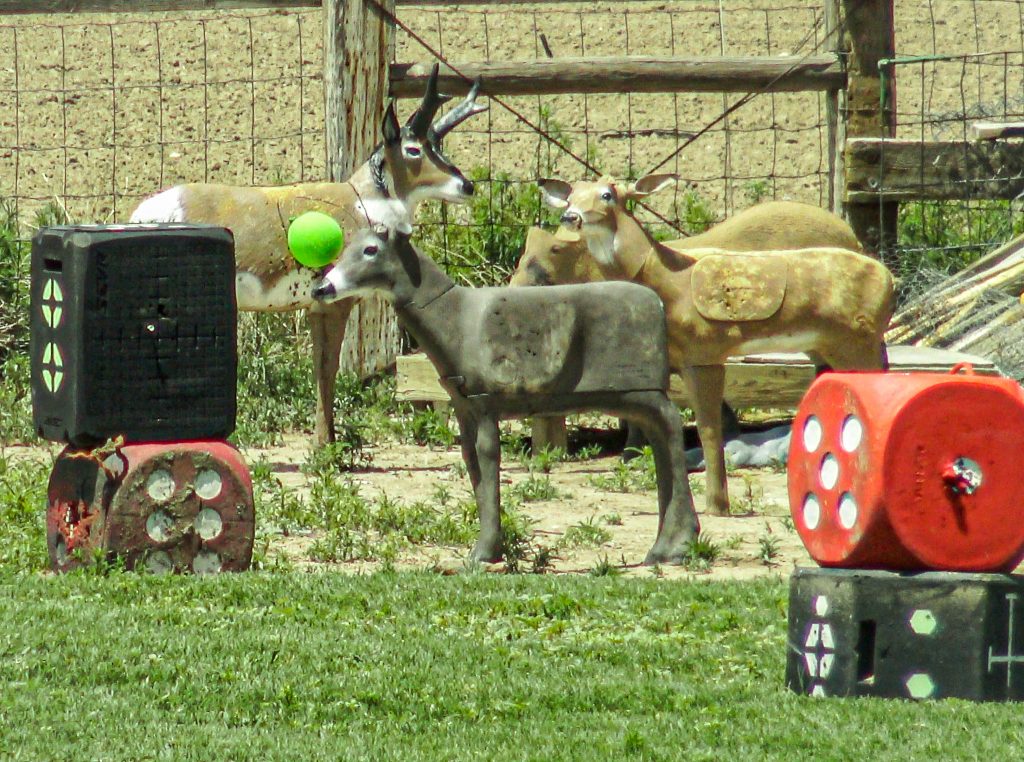
One round is seven shots. Scoring on the 5-Spot works the same as described above. The balloon pop is a score of 10 or 0 — 10 for a hit and 0 for a miss. The golf tee shot at 20 yards is a 10 for the cracked tee, five if the arrow is within a 2-inch diameter, and 0 if the arrow is more than 2 inches away from the tee.
You can shoot as many rounds as you want. Be sure to record your scores to track your progress over time.
How does this make you better?
First, there is a big difference between shooting at a singular dot on a blank face target at 30 yards and shooting five arrows at five target faces on the same target face.
Grab yourself one of my all-time favorite foam targets, Morrell’s High Roller, and tell me if you had greater success pounding the single dot side of this dice-style target or the five-spot side. Most often, you will have greater success putting an arrow in the singular dot because there are no other dots or aiming points. Having five separate aiming points on a 17″x17″ paper makes things a little cluttered, and you have to hit targets on the paper that are high, low, and middle. Plus, you’re working to accomplish this task at 30 yards, not 20.
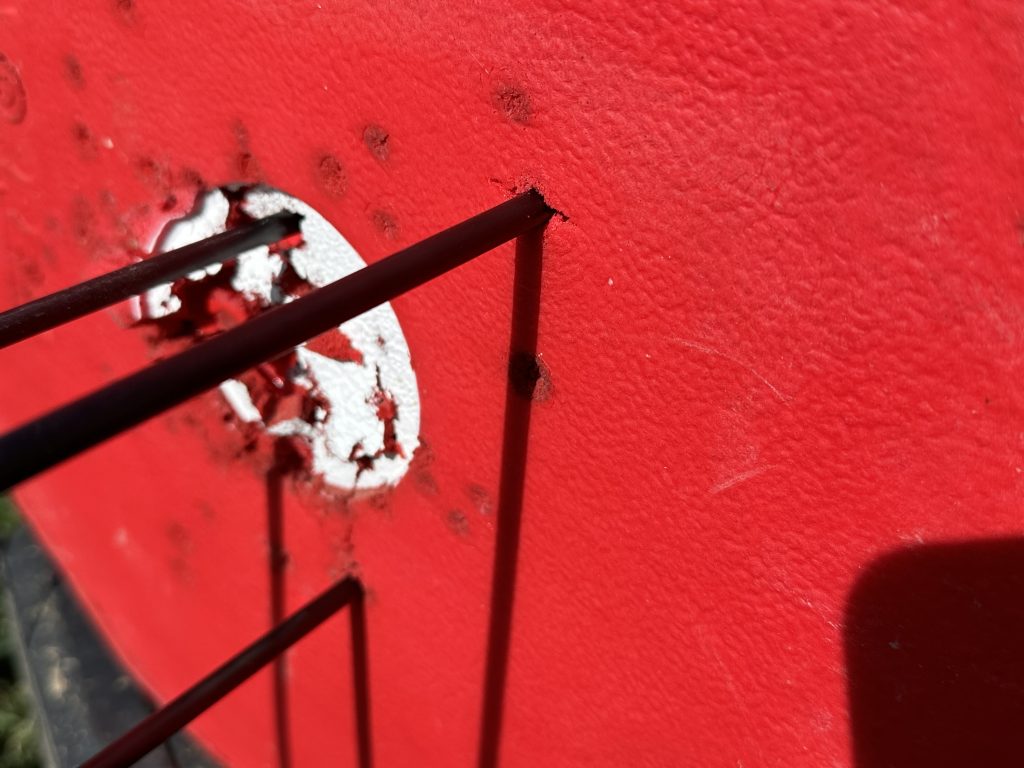
The balloon pop from a distance is crucial because it’s fun and gives the shooter immediate feedback of a confirmed hit or miss. I like using Delta McKenzie’s Backyard 3D targets. They are inexpensive and allow me to set the balloon over vitals.
The golf tee shot at 20 requires complete focus. A golf tee measures .44 inches across, and hammering that golf tee with an arrow shaft from 20 yards is difficult.
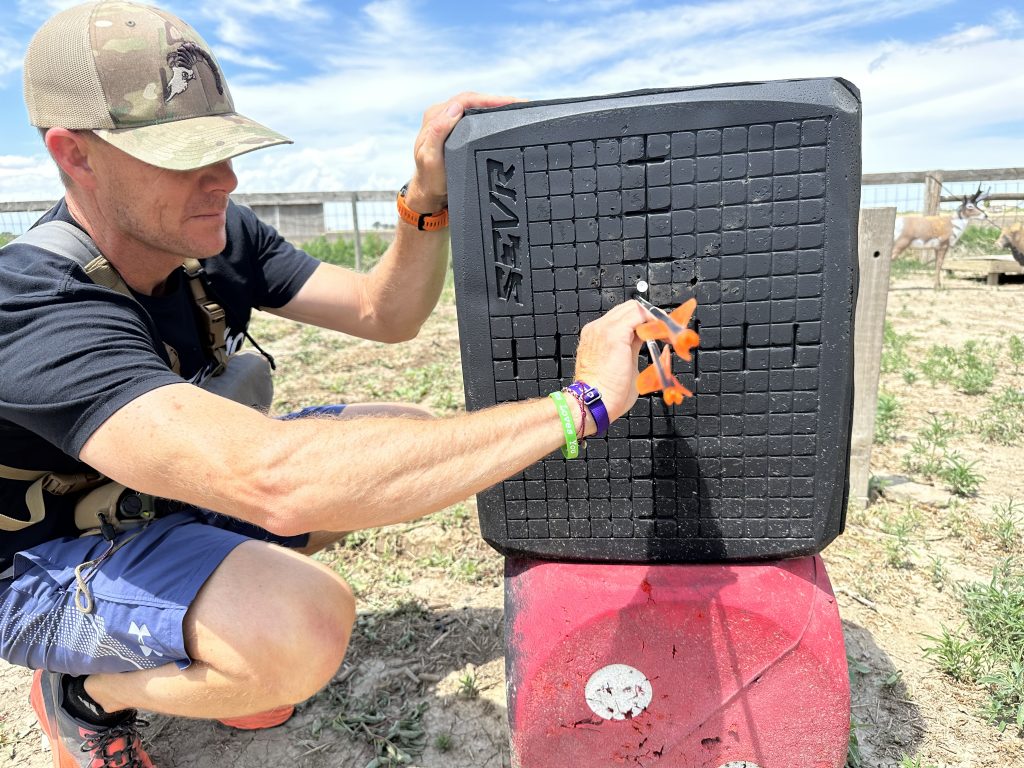
I like to use SEVR’s 21″ HD target for the golf tee shot. Not only does the target come with several golf tees, but the target also has a blank 1-inch MOA side. When shooting at the golf tee, we move from several defined aiming points at 30 yards (the 5 Spot) to a singular aiming point at 20 yards.
Game #2 – Defined & Non-Defined
When shooting at foam, there are two types of aiming points — defined and non-defined. A defined aiming point is the white circles on Morrell’s High Roller or the hexagon-shaped red/black aiming points on its Yellow Jacket Supreme 3 Field Point Archery Target.
These points give us a defined symbol to hit. Non-defined aiming points are those on 3-D targets. Yes, I understand that 3D targets have scoring rings, but those rings match the color of the foam and are much less distinguishable. Non-defined aiming points are great because they are much like animals’ vitals. We must aim center lung, trust our pin float, and execute. Shooting at 3D targets creates realism.
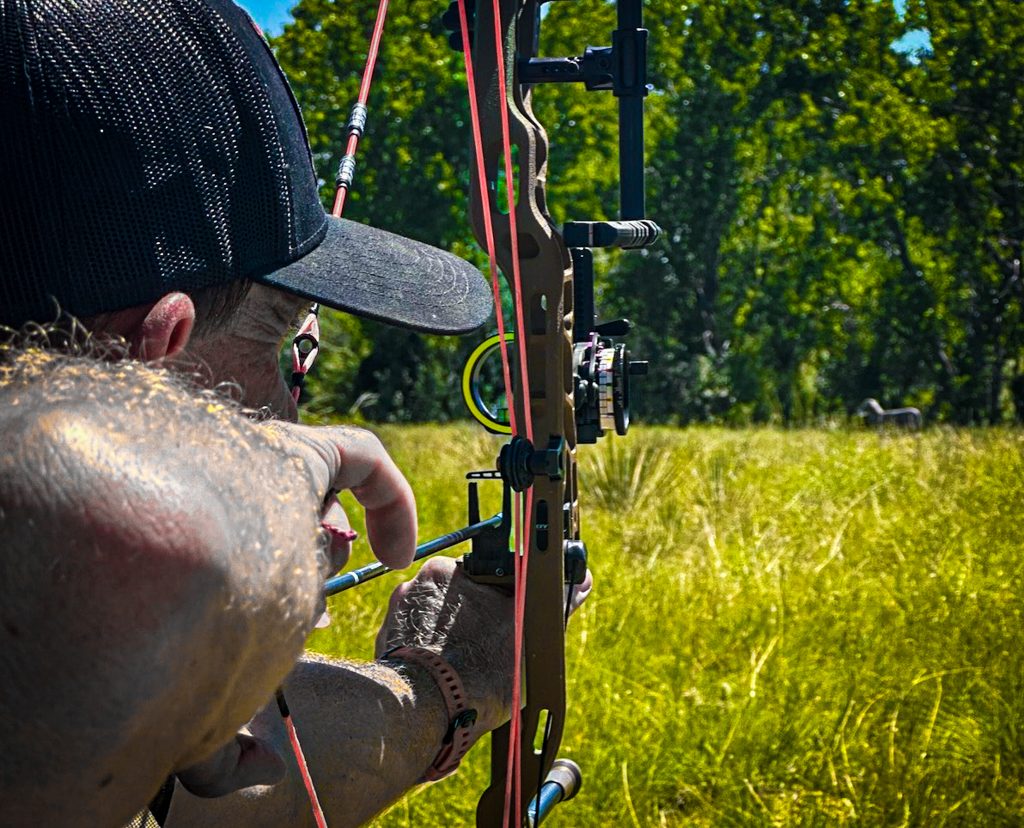
For this game, I use Morrell’s High Roller dice-style target. I shoot three arrows from 40 yards at the three-sided dice side. Any arrow in or touching the white is worth 10. Any arrow outside the white is worth 0. Next, I jump to a 3D target at 20 yards. This is a non-defined aiming point, and as long as your shaft is in the vitals, you move from 20 yards to 30 yards and give yourself a score of 10. At 30 yards, you shoot another arrow. If it’s in the vitals of the 3D target, you get another score of 10 and move back to 40 yards. I play this game back to 80 yards. However, the first time you hit outside the vitals on your 3D target, you stop at that distance, and the game is over. You can then resume a new game.
Game # 3: Three Arrows With Penalty
This is my favorite game to play, and I play it often. You can use a bag or block target for this game, but I prefer a 3-D target with a non-defined aiming point.
What I mean by a non-defined aiming point is that while scoring rings are present on a 3-D target, there are no white, orange, or green dots. The aiming point is non-specific, as I’m not going for score but for killing shots.
Start at 20 yards and shoot a three-arrow group. If all those arrows are a solid kill (be honest with yourself), you can move back to 30 yards. If one or more arrows are outside the kill zone, you must take a penalty and move up 10 yards.
For example, if one arrow were outside the kill zone at 20 yards, you’d need to move to 10 yards and put three arrows in the kill zone before moving back to 20 yards.
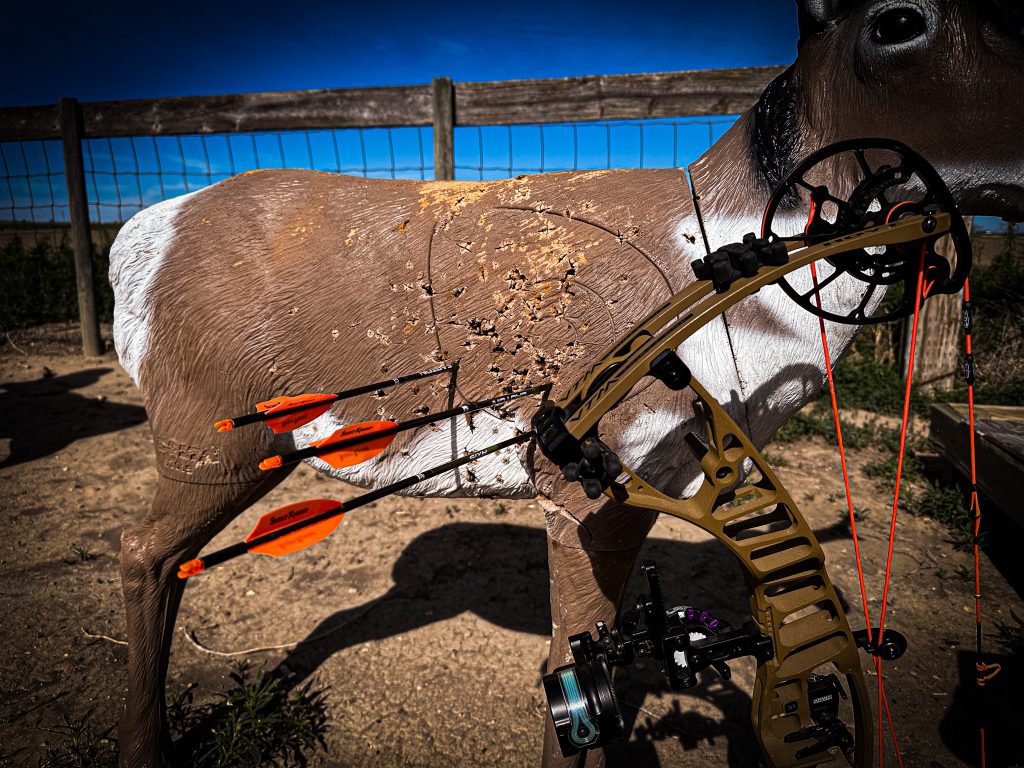
Be honest with yourself. From 70 yards, the author has two arrows in the vitals and one arrow low. This resulted in a penalty, and the author had to return to 60 yards.
The process stays the same from 20 yards back to as far as you want to play the game. Most of the time, I play from 20 to 90 yards. The key is staying true to yourself and the game. Don’t get sloppy. If you’re on a roll and move to 60 yards and put an arrow outside the kill zone, you must move back to 50 yards. Each time you play the game, give it your best to be better than you were the time before. I record all my results in a shooting journal.
Enjoy stepping outside established norms and challenging yourself. The more you do these types of shooting exercises, the better bow shot and bowhunter you will become.
